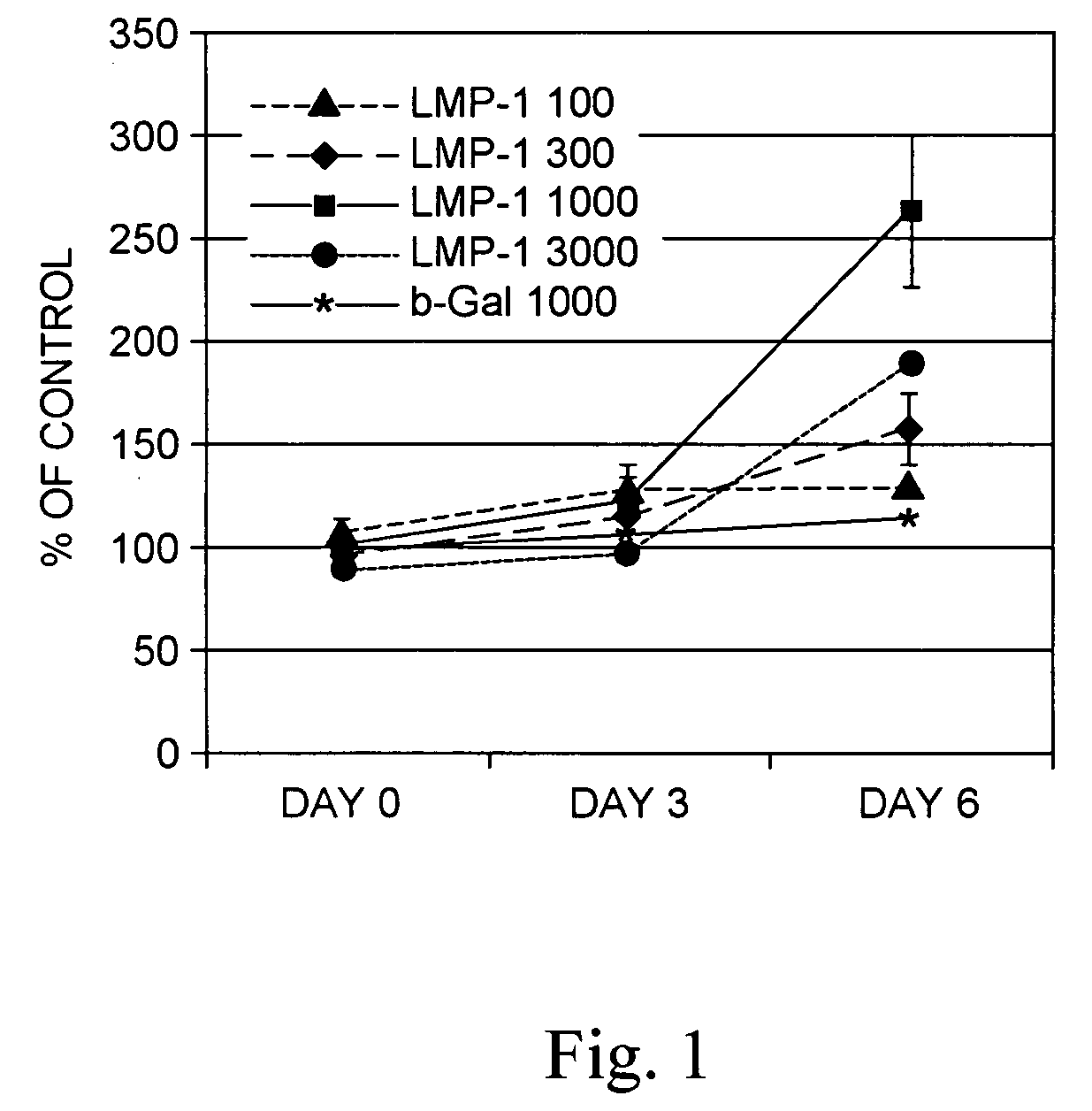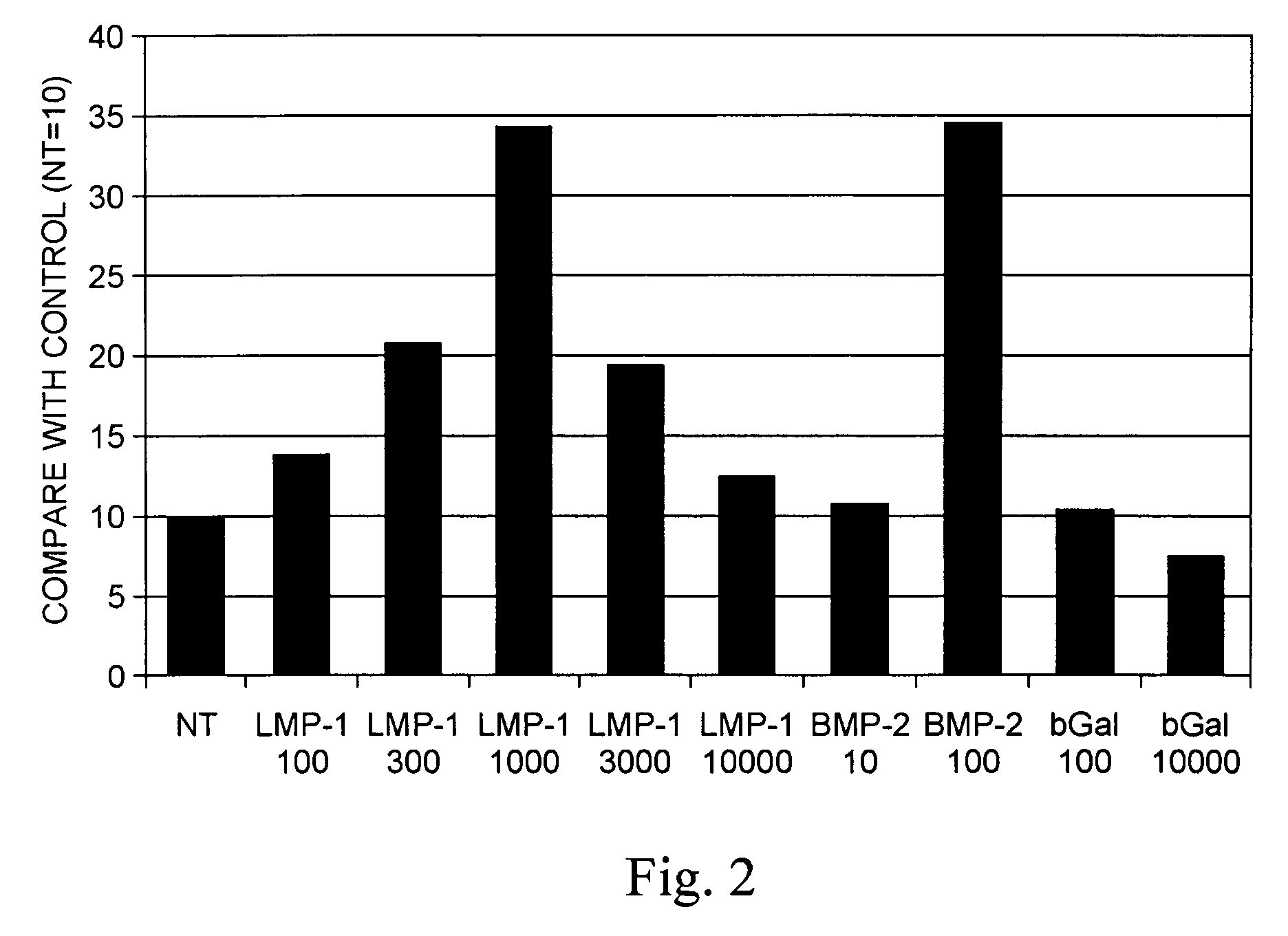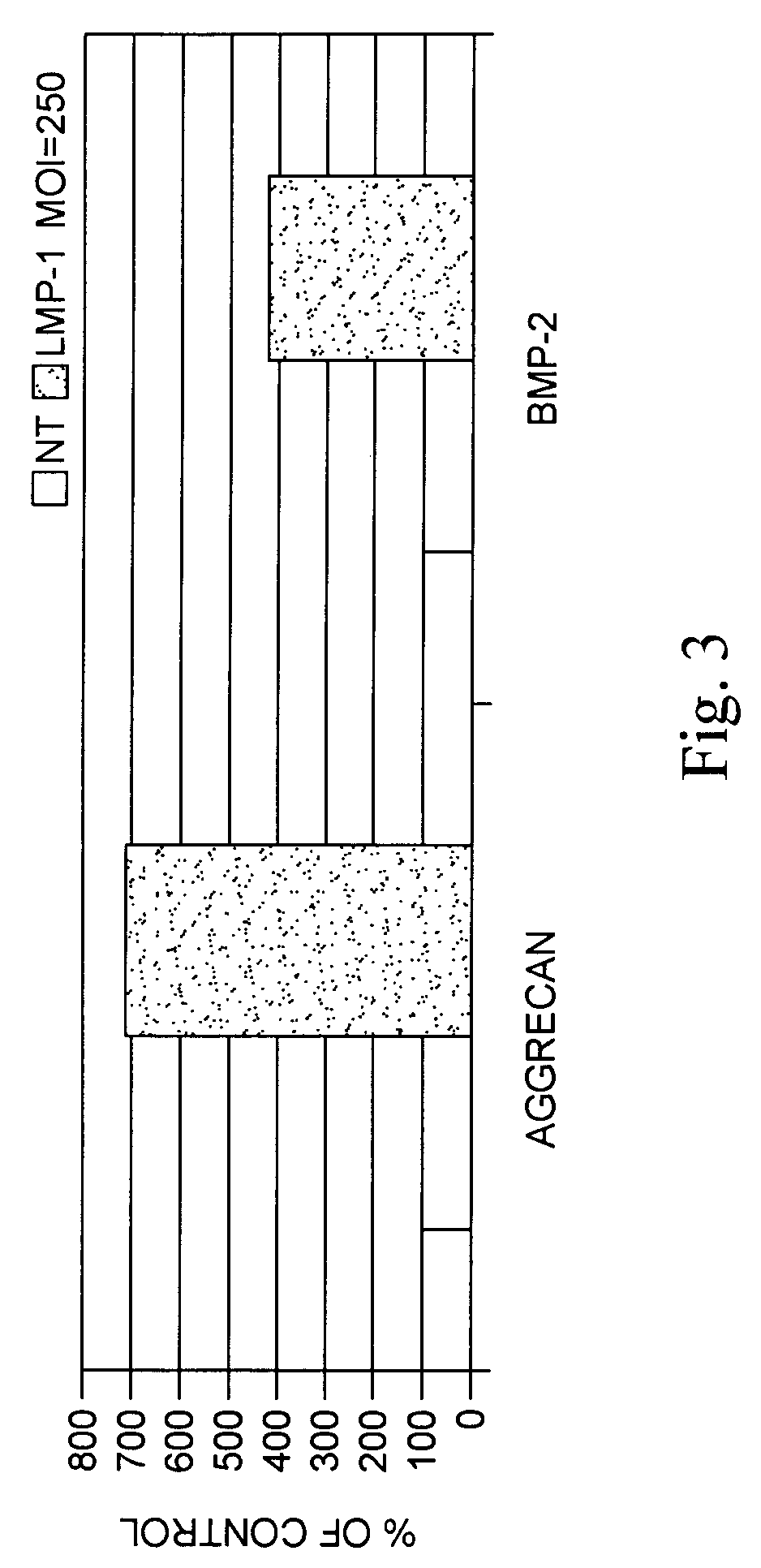Methods of expressing LIM mineralization protein
a technology of mineralization protein and lim, which is applied in the field of methods for expressing lim mineralization protein, can solve the problems of increasing the cost of such treatment methods, increasing the risk of disease or injury for humans and other mammalian species, and reducing the production of osteocalcin, so as to inhibit the mineralization of nodules and reduce the effect of osteocalcin production
- Summary
- Abstract
- Description
- Claims
- Application Information
AI Technical Summary
Benefits of technology
Problems solved by technology
Method used
Image
Examples
example 1
Calvarial Cell Culture
[0100] Rat calvarial cells, also known as rat osteoblasts (“ROB”), were obtained from 20-day pre-parturition rats as previously described. Boden. et al., Endocrinology, 137, 8, 3401-3407 (1996). Primary cultures were grown to confluence (7 days), trypsinized, and passed into 6-well plates (1×105 cells / 35 mm well) as first subculture cells. The subculture cells, which were confluent at day 0, were grown for an additional 7 days. Beginning on day 0, media were changed and treatments (Trm and / or BMPs) were applied, under a laminar flow hood, every 3 or 4 days. The standard culture protocol was as follows: days 1-7, MEM, 10% FBS, 50 μg / ml ascorbic acid, .±.stimulus; days 8-14, BGJb medium, 10% FBS, 5 mM β-GlyP (as a source of inorganic phosphate to permit mineralization). Endpoint analysis of bone nodule formation and osteocalcin secretion was performed at day 14. The dose of BMP was chosen as 50 ng / ml based on pilot experiments in this system that demonstrated a ...
example 2
Antisense Treatment and Cell Culture
[0101] To explore the potential functional role of LMP-1 during membranous bone formation, we synthesized an antisense oligonucleotide to block LMP-1 mRNA translation and treated secondary osteoblast cultures that were undergoing differentiation initiated by glucocorticoid. Inhibition of RLMP expression was accomplished with a highly specific antisense oligonucleotide (having no significant homologies to known rat sequences) corresponding to a 25 bp sequence spanning the putative translational start site (SEQ. ID NO: 42). Control cultures either did not receive oligonucleotide or they received sense oligonucleotide. Experiments were performed in the presence (preincubation) and absence of lipofectamine. Briefly, 22 μg of sense or antisense RLMP oligonucleotide was incubated in MEM for 45 minutes at room temperature. Following that incubation, either more MEM or pre-incubated lipofectamine / MEM (7% v / v; incubated 45 minutes at room temperature) was...
example 3
Quantitation of Mineralized Bone Nodule Formation
[0104] Cultures of ROBs prepared according to Examples 1 and 2 were fixed overnight in 70% ethanol and stained with von Kossa silver stain. A semi-automated computerized video image analysis system was used to quantitate nodule count and nodule area in each well. Boden. et al., Endocrinology, 137, 8, 3401-3407 (1996). These values were then divided to calculate the area per nodule values. This automated process was validated against a manual counting technique and demonstrated a correlation coefficient of 0.92 (p<0.000001). All data are expressed as the mean.±.standard error of the mean (S.E.M.) calculated from 5 or 6 wells at each condition. Each experiment was confirmed at least twice using cells from different calvarial preparations.
PUM
| Property | Measurement | Unit |
|---|---|---|
| concentration | aaaaa | aaaaa |
| pH | aaaaa | aaaaa |
| pH | aaaaa | aaaaa |
Abstract
Description
Claims
Application Information
 Login to View More
Login to View More - R&D
- Intellectual Property
- Life Sciences
- Materials
- Tech Scout
- Unparalleled Data Quality
- Higher Quality Content
- 60% Fewer Hallucinations
Browse by: Latest US Patents, China's latest patents, Technical Efficacy Thesaurus, Application Domain, Technology Topic, Popular Technical Reports.
© 2025 PatSnap. All rights reserved.Legal|Privacy policy|Modern Slavery Act Transparency Statement|Sitemap|About US| Contact US: help@patsnap.com



